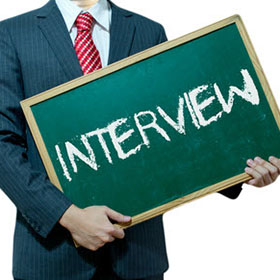If you’re looking for some conversation fodder for tonight’s dinner date, take a look at these alternately nebulous and exacting questions culled from real-life job interviews across several industries. While it makes sense for a Data Scientist to test your ability to estimate numbers on sight, I would personally find it more intimidating (but interesting) to answer a Brand Manager’s query as to what brand best represents me as a person. Deep stuff, no?
Here are 27 of the toughest job interview questions reported by Glassdoor users during the past year.
- “How do you explain a vending machine to someone who hasn’t seen or used one before?” – Global data analyst at Bloomberg
- “How many fire hydrants are there in Los Angeles County?” – Software engineer at Disney Interactive Studios
- “If your current employer had an anniversary party for you, what five words would be written on the cake to describe you?” – District manager at Express
- “Who in history would you want to go to dinner with and why?” – Flight attendant, at PSA Airlines
- “Prove that hoop stress is twice the longitudinal stress in a cylindrical pressure vessel.” – Test operations engineer at SpaceX
- “What’s the capital of Canada?” – Team leader at OpticsPlanet
- “Name a brand that represents you as a person.” – Brand strategist at Twitter
- “Estimate how many employees are in the next building” – Data scientist at Risk Management Solutions
- “How many happy birthday posts do you think Facebook gets in one day?” – Sales operations at Facebook
- “If you could take anyone on a road trip with you, who would you take and why?” – Educator at lululemon
- “What’s the first thing you’d print with a 3D printer if you had one?” – Linux systems administrator at Rackspace
- “If you had to take only one item to a deserted island, what would that be?” – Customer service specialist at Squarespace
- “Please describe an instance where you had to make a decision without all of the necessary information.” – Analytics at athenahealth
- “How do you reverse a text string on the Unix command line?” – Developer at Capital One
- “If you’re in a boat with a boulder and you drop that boulder into the lake, how does the water level before and after you drop the boulder in the lake compare?” – Mechanical design engineer at Apple
- “You have been asked to lead a multi-million dollar, multiyear grant that will be supported across several companies and universities. How do you start?” – Research scientist at Ford Motor Company
- Sell me on one idea, and then sell me on the opposite of that idea.” – Solarwinds administrator at Blizzard Entertainment
- “How would you go about finding the top five Java developers in a certain area.” – Technical recruiter at Google
- “What’s the probability of an integer from 1 to 60,000 not having the digit 6?” – Quantitative developer at AKUNA CAPITAL 20. “If you were a Muppet, which character would you be?” – Donor family advocate at LifeNet Health
- “Give me 48 cents using six coins. Tell me quantity and value of the six coins.” – Human resource manager at Wintec
- “Write an equation to optimize the marketing spend between Facebook and Twitter campaigns.” – Analyst (data science) at Uber
- “What is the angle at 3:15?” – Implementation consultant at Fast Enterprises
- “What part of the newspaper do you read first? What does this say about you?” – Audit at BDO USA
- “If a co-worker had an annoying habit, and it hindered your quality of work, how would you resolve it?” – Production technician at Procter & Gamble
- “Throw your resume aside and tell me what makes you you.” – Sales executive at Zillow
- “How would you find the square root of 1.2?” – Hardware engineer at Jump Trading




